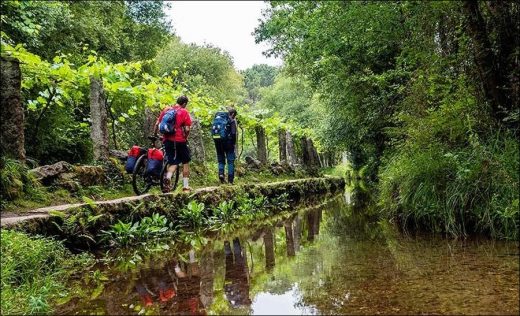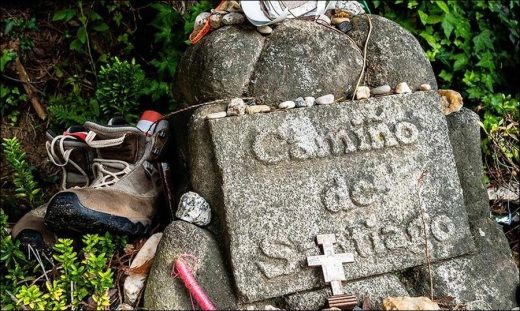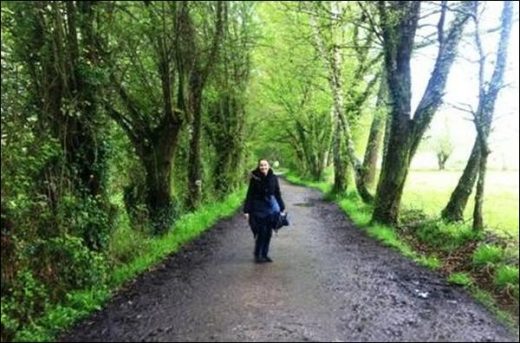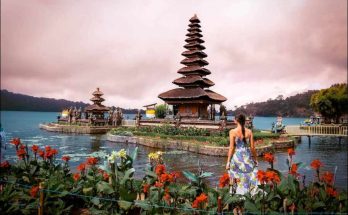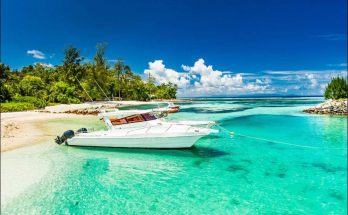The Camino de Santiago road, also known as the Portuguese Road, is still used by Christians today as one of the most known pilgrimage routes in the Christian world. The historic route in Portugal starts from Porto and runs along the Douro River. Christians who walk the pilgrimage path, Douro, Ave, Cavado, Neiva, Lima and Minho rivers crossing to the north. The route in the countryside is 227 kilometers long. This route, which passed through Portugal, began to be used in the 13th century and was extended by other pilgrims over time.
The Camino de Santiago experience
I always envied backpackers, but it was fortune. The first idea for this journey began by watching The Way. Ten minutes after watching the film, Etem and I had already determined our departure date and route.
One of the most well-known walking routes in Europe and the world James Road, in other words, Camino de Santiago in Spanish, Santiago Road in English.
The writer Paulo Coelho walked the 700 km of this road, from the Pyrenees to Santiago, and his impressions formed the basis of the Hajj. Although it was renowned as a sacred pilgrimage for Catholics, it has now turned into a purely cultural, sporting, touristic walkway.
The pilgrimage marches are very very diminished. People walk for health, to listen to oneself and even to meet new people.
The city of Santiago Compostela, which has been on the UNESCO World Heritage List since 1985, became the European Capital of Culture in 2000.
The legend of the road is as follows; Jacob, the son of one of Jesus’ disciples, was killed in Jerusalem in the Middle Ages and was not allowed to be buried. His followers reach Santiago de Compostela by ship and bury the bones there.
Although the church initially opposed it, it became a sacred place and a city was built where it was buried. The path that is sacred to Catholics does not have an official beginning. It can be started from anywhere in Europe. Purpose The most popular of these is the “Camino Francés” – the French way.
Those who want to walk 700-800 km. road, although the last stage of the 120 km Sarria-Santiago de Compostela we walked. The longest walk was 27 km and the shortest was 19 km. Walked route and km with an application downloaded to the phone. able to measure.
THY has a transfer from Bilboa to Santiago de Compostela. Our flight 4 + 1 took about 5 hours. From Santiago de Compostela airport, we went to Lugo with a bus that departs for half an hour and then we went to Sarria where we would start walking with another bus.
Albergue is located on the road in hostels, churches, volunteer houses can be accommodated in very small amounts. However, I was a bit afraid, I did not take the risk, and I had already made reservations at our break points on the way from Booking.
Our first hotel in Sarria is a very charming stone building with nice food; Casa Barbadelo. The road is mountain, walking over the hill, passing through many villages, there are many cafes-bars and restaurants for a break. The roads are mostly hard soil footpath, partly paved with stone, some places asphalt.
It is impossible to get lost because the road is completely marked with yellow sea shell logo and yellow arrow signs. We had no difficulty finding the way even in the most remote forests along the way. There was always a yellow sign at each crossroads.
After arriving in Santiago de Compostela, the pilgrims went further and went to the town of Finisterre on the coast of the Atlantic Ocean and washed up and ended their pilgrimage. While the last stage we walk on average is 130 thousand people every year, this number has approached 250-300 thousand people in recent years.
So in most parts of the walk you see other walks around you, some are making friends on this path. The people we talked to came from different parts of Australia, Canada, the Netherlands and Spain. We walked for almost a week with the same people. I think it was early in the morning like us, our traveling companions.
Galician village houses were spectacular. They had very stylish farm houses, the buildings and the gardens were like works of art. But we were most impressed with the stonework.
Galicia receives a lot of rain (half of the year is rainy), and everywhere is lush and streams flow everywhere. We saw plenty of springs along the way, we jumped over the creeks.
Northern Spain is famous for its wines and wines. Especially the seafood, octopus restaurants they call pulperia almost everywhere. Food and drink prices are also generally lower than other European prices.
We have come across the practice that we have seen before in Denmark. they put, the prices written on them you want to take the money and even the money you get on top of the box. No waiting, no guards.
Along the walk we came across a structure in the gardens of almost every house we passed through the villages. These structures, which are made of intermittent wood on the stone feet at a height of 1-2 meters above the ground, pass through the air.
Sarria-Santiago de Compostela route; elevations, distances and accommodation information. This table was very useful for us. The square of the cathedral in Santiago de Compostela, which we reached after a 6-day walk, is a large stone-covered square. It’s full of people from everywhere, from every country.
Our 7th hotel on our trip is Hospedería San Martín Pinario which is as breathtaking as the cathedral. Our hotel is right next to the cathedral used to be a monastery. I think the thickness of the walls of the colossal hotel was close to 1.5 meters.In the corridors, halls, dining room was very impressive.
Visits: 424
